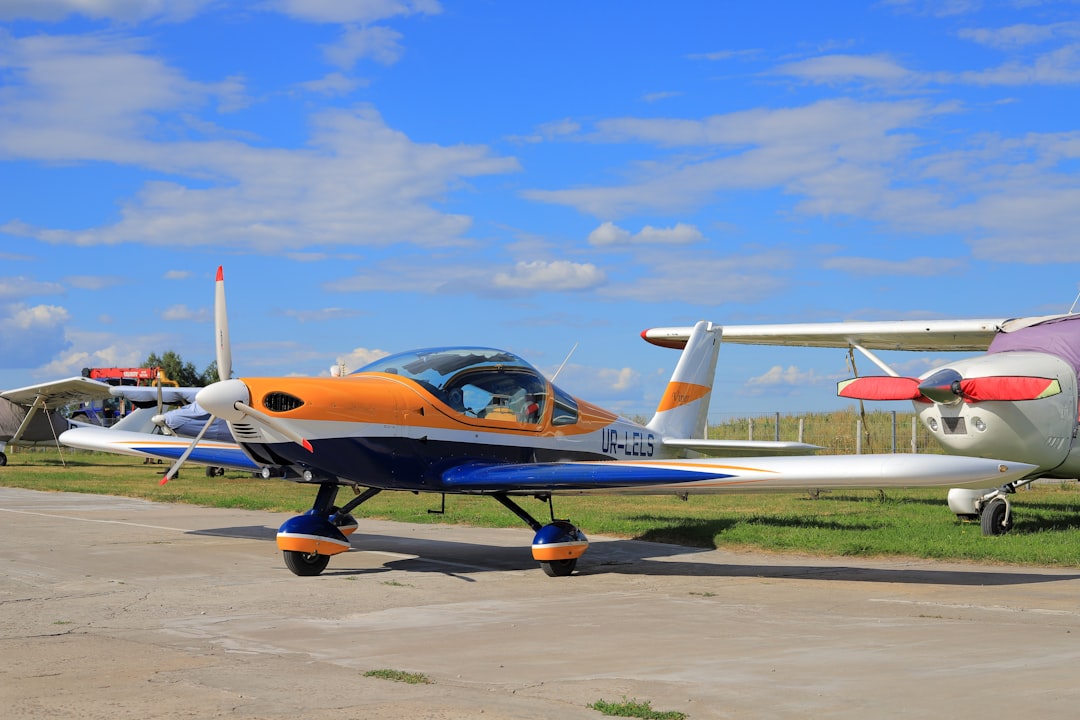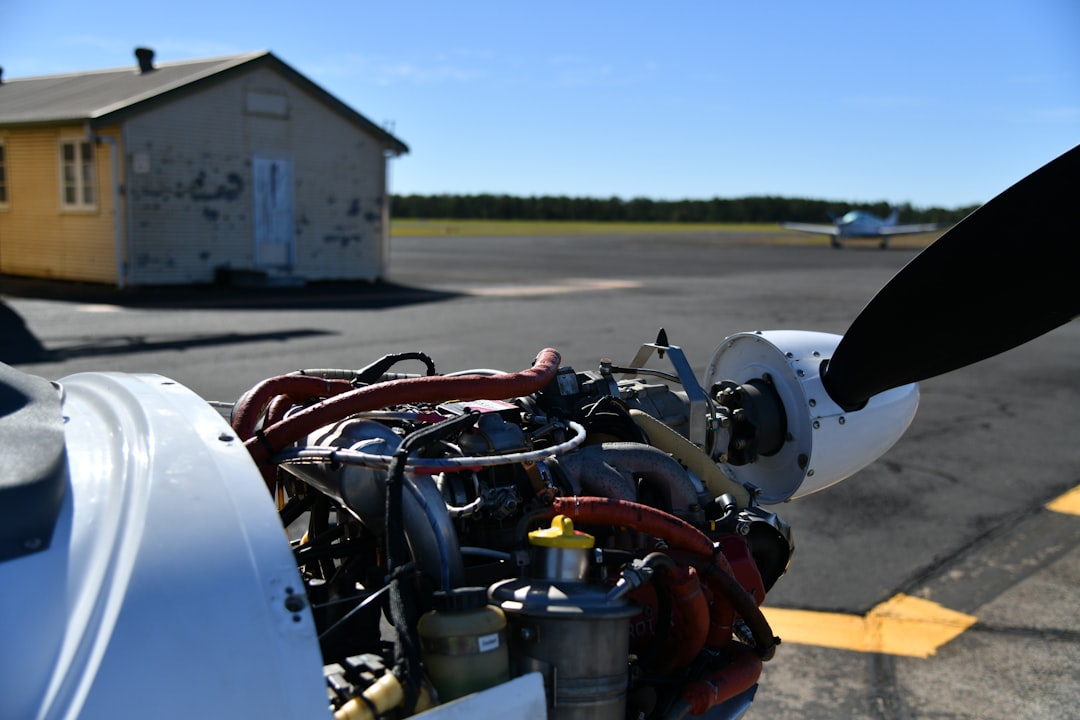

Engage prospects with a scan and streamline customer engagement with FREE QR code marketing tools by Sona – no strings attached!
Create a Free QR CodeFree consultation

No commitment

Engage prospects with a scan and streamline customer engagement with FREE QR code marketing tools by Sona – no strings attached!
Create a Free QR CodeFree consultation

No commitment
Aircraft training schools today operate in an environment where digital transformation is fundamentally reshaping both student expectations and institutional strategy. Prospective pilots, flight instructors, and aviation leaders expect instant access to information, transparent comparisons, and a streamlined admissions experience that moves at the speed of their curiosity. When a candidate is deciding between schools, the fastest and most frictionless path to answers often wins.
Yet many flight schools still rely on analog processes that were designed for a slower era. Printed brochures, handwritten sign-up sheets at open houses, and generic event flyers do little to capture intent or inform timely follow-up. High-value prospects can slip through unnoticed, and long follow-up delays open the door for competing programs to engage first. The result is a leaky pipeline and uncertainty about which marketing efforts truly drive enrollment.
Integrating QR codes into recruiting, admissions, and operations connects every offline touchpoint to a measurable digital action. By placing QR codes at events, on aircraft and simulators, in classrooms, and across print and digital campaigns, schools can capture warm leads the moment interest sparks. With the right analytics and integrations, these scans become insight-rich signals that power faster follow-up, better segmentation, and steady, sustainable growth.

Aircraft training schools face the risk of missing top students when analog workflows fail to capture intent at the moment it appears. A student might be excited after a discovery flight or inspired by a simulator demo, yet if the only next step is a brochure or a clipboard form, you lose momentum and data quality. The most qualified candidates for advanced ratings or airline pathway programs are often the most decisive. They are also the least tolerant of friction.
QR codes bridge the physical-digital divide with a simple scan. Every sign, aircraft decal, event banner, or classroom poster can direct prospects to purpose-built digital experiences: program explainers, tuition and financing calculators, instructor bios, and interest forms that connect to your CRM with Sona QR. The result is less guesswork, a shorter path to conversation, and a pipeline filled with students whose interests match your strongest offerings.
When deployed with purpose, QR codes do more than capture names. They help schools understand which messages resonate, which channels deliver high-intent inquiries, and how to guide each prospective student through their next best step.

Flight training involves a long consideration cycle with multiple information needs: curriculum structure, instructor quality, aircraft availability, weather considerations, tuition and financing, regulatory pathways, and career outcomes. Traditional methods rarely surface which parts of this journey matter most to each prospect. QR codes convert curiosity into data and access into action.
A scan creates a frictionless bridge from offline to online. A prospective student sees a poster about your commercial pilot program, scans the QR code, and lands on a page that explains training phases, aircraft models, simulator resources, and airline partnerships. With a single interaction you know what caught their attention and can invite them to submit interest, book a tour, or schedule a discovery flight.
By generating better signals earlier, QR codes help aviation schools focus time and budget where it counts: on the candidates most likely to enroll and succeed.

Disjointed experiences and untrackable print materials make it hard to know what is working. QR codes unify physical and digital engagement by delivering the right destination in a scan and capturing the data you need to improve.
Different QR formats support different goals:
Dynamic QR codes are particularly valuable. They support real-time updates, A/B testing of destinations, and individualized tracking by placement, event, or aircraft. Use dynamic codes for any campaign where learning and iteration will improve outcomes.

Growth often hides in plain sight: moments where interest is high but the next step is unclear or hard to take. QR-enabled touchpoints convert those moments into measurable progress.
Recruiting events, tours, and hands-on sessions generate enthusiasm but are historically hard to track. Simulators and aircraft meet-and-greets create emotional connections that quickly fade if not captured. Classroom and campus signage carries ongoing traffic that rarely translates into digital signals. QR codes change that by converting attention into action on the spot.
By mapping QR placements to growth goals, schools can spot high-performing surfaces, reallocate investments with confidence, and accelerate the movement from awareness to application.

QR codes excel when they match a clear audience need with a timely digital action. In aircraft training schools, the following use cases consistently drive results and insight.
Open house and campus tour lead capture: QR banners and podium signs let attendees register instantly, download information packets, and indicate program interests. Admissions teams receive structured data right away, enabling segmented follow-up by program and stage.
Workshop and seminar feedback: QR codes on exit signs or handouts prompt immediate feedback and next-step interest such as request a call from an instructor or join the instrument ground school. Responses identify satisfaction drivers and signal which attendees are ready for deeper engagement.
Course enrollment and syllabus access: QR codes on flyers and classroom posters send students to enrollment forms, curriculum downloads, and prerequisite checklists. Scan data shows which courses are trending, informing future scheduling and marketing.
When each use case maps to a focused outcome, schools capture higher-quality data and deliver more relevant experiences.
Each QR scan carries context: where it happened, what message prompted the scan, and what the visitor did next. Using multiple codes across your touchpoints turns scattered interactions into segmented audiences you can serve with precision.
For aircraft training schools, distinctions like career-focused airline pathway candidates versus recreational flyers matter. Retargeting based on scan behavior allows you to present the right next step: a financing consultation for degree-track students, an advanced avionics seminar for instrument candidates, or a weekend discovery flight offer for hobbyists.
Segmentation makes your communications feel personal rather than promotional. A candidate who scanned a QR code in a multi-engine simulator should not receive the same emails as a high school student who scanned a flyer at a career fair. Use the data to meet each prospect where they are. For deeper activation, Sona is an AI-powered marketing platform that turns first-party data into revenue through automated attribution and data activation; see Sona’s Playbook intent-driven retargeting.
QR codes should not sit in a silo. They should connect and measure activity across your existing channels so that every offline impression can turn into an online journey.
For aircraft training schools, multi-channel consistency is critical. Prospects might see a banner at the local airport, receive a postcard at home, watch a social video, and attend an open house. A coherent QR strategy ensures each of those moments drives to a complementary step in the same funnel and that your team can attribute outcomes back to the originating touchpoints.
QR codes serve as the offline onramp to your digital marketing engine and unlock a new layer of measurement in channels that were once opaque. With a centralized platform like Sona QR, you can create all your codes, monitor their performance, and sync scan data to your CRM and ad platforms to keep every channel connected.
Effective QR campaigns follow a repeatable process that aligns goals, creative, placement, and analytics. Use the steps below to plan and launch with confidence.
Every QR code should have a single, clear purpose. Decide what business outcome you want from the scan and design the destination to deliver that outcome without extra clicks.
Common goals for aircraft training schools include lead capture for a new instrument course, discovery flight bookings at a seasonal open house, follow-up interest after a safety workshop, or scholarship application starts for local high school outreach. Be specific about the audience and the action you want them to take.
Choose the QR format that fits your use case and the level of flexibility you need. Static codes are appropriate for evergreen materials that will not change. Dynamic codes are essential for campaigns where you want to track performance, update content, or run tests without reprinting.
Presentation matters. A QR code with the right visual cues earns more scans and better-quality interactions. Make it obvious what the code will do and why scanning is worth it.
Include branding elements like a logo in the QR design, use a high-contrast color scheme, and add a clear CTA near the code. Test in the real environment where the code will live to ensure scannability at expected distances and angles.
Put QR codes where they will be noticed and where scanning is safe and convenient. Align placement with the action you want. For example, a code on a simulator dash that links to an advanced avionics workshop feels natural and timely.
Focus on brochures, simulator displays, classroom doors, and banners that already attract attention. Use event-specific codes so you can attribute results to particular venues or audiences.
Launch is the beginning, not the end. Use your QR analytics to evaluate scan volume, time of day, device type, and conversion behavior. Iterate on creative, placement, and destinations to improve results week over week.
Tools like Sona QR make it simple to track scans and integrate data with your CRM. Monitor which codes drive bookings or applications rather than just clicks. Run A/B tests on landing pages and CTAs, and retire underperforming placements. See Sona’s blog pipeline impact.
Limited visibility into which touchpoints drive student action leads to wasted budget and missed enrollments. QR-enabled analytics replace guesswork with facts. Instead of hoping a brochure worked, you can see that a specific open house banner drove 74 scans, 33 syllabus downloads, 12 discovery flight bookings, and four applications. See offline attribution.
Connecting scans to outcomes requires two things: a platform to capture detailed scan data and integrations that push those events into your systems for follow-up and attribution. When the data flows, admissions and marketing teams can make better decisions and move faster.
With Sona QR and Sona.com, you can capture every scan with timestamp, device, and location, visualize engagement by placement, and sync activity to HubSpot or Salesforce for automated workflows. Sona’s identity and attribution features help link anonymous scans to known contacts and attribute revenue across multiple touches. The result is a performance marketing loop where offline interest connects directly to pipeline and enrollment outcomes.
Scaling QR impact is about repeatability and relevance. The more you tailor codes to context and automate timely follow-up, the more conversions you will see. Start with foundational best practices then layer in creative placements that fit aviation culture.
Small improvements compound. A clearer CTA, a better-placed code, or a faster follow-up can be the difference between a casual scan and a committed application. See student engagement research.
For aircraft training schools, QR codes are more than a novelty. They offer pragmatic solutions to persistent challenges: lost opportunities at events, fragmented data across print and physical touchpoints, and delays that let competitors move first. When every surface can connect to a digital action and every scan can feed analytics, you build a connected pipeline that meets modern students where they are.
The schools that win will be the ones that reduce friction at every step: instant info at the point of interest, personalized follow-up based on intent, and continuous optimization informed by data. QR codes make that approach feasible and affordable. With a thoughtful deployment and tools like Sona QR for creation and tracking, and Sona.com for attribution and CRM integration, you can turn curiosity into conversations, conversations into bookings, and bookings into enrollments. See Sona’s blog multi-touch attribution.
Start creating QR codes for free.
The path from first scan to rating completion is complex, but it does not have to be chaotic. Put QR codes to work across your recruiting and operations, and transform each moment of interest into a measurable step toward helping the next generation of aviators take flight.
QR codes have transformed aircraft training schools from traditional information delivery into dynamic, lead-generating engines. Whether it’s streamlining lead capture at open houses, enhancing student engagement with instant access to course details, or tracking which materials spark the most interest, QR codes replace tedious manual follow-ups with real-time, actionable data that fuels enrollment growth.
Imagine knowing exactly which brochures, flyers, or event booths drive prospective students to take the next step—and being able to optimize your outreach on the fly. With Sona QR, you can create dynamic, trackable QR codes in seconds, update campaigns instantly without reprinting, and link every scan directly to your recruitment goals. No missed leads, no wasted effort—just smarter, more effective student acquisition.
Start for free with Sona QR today and turn every scan into a potential enrollment, a meaningful conversation, or a successful student onboarding.
The article does not list specific aircraft training schools but emphasizes that the best schools use digital tools like QR codes to streamline recruiting, admissions, and operations for faster, data-driven growth.
QR codes enhance flight school learning by providing instant access to program details, instructor bios, syllabi, and training resources, creating a frictionless bridge from offline materials to dynamic digital content that supports student engagement and onboarding.
You can gather feedback by using QR codes placed on exit signs or handouts during workshops and seminars, which link to short surveys and follow-up offers to capture student satisfaction and interest in next steps.
Benefits include capturing high-quality leads instantly, improving follow-up speed, tracking engagement with events and materials, delivering dynamic content, reducing manual data entry errors, enabling personalized communications, and providing actionable analytics to optimize marketing and enrollment.
The article does not mention aviation insurance providers using QR codes; it focuses on how aircraft training schools use QR codes to educate and engage students.
Use Sona QR's trackable codes to improve customer acquisition and engagement today.
Create Your FREE Trackable QR Code in SecondsJoin results-focused teams combining Sona Platform automation with advanced Google Ads strategies to scale lead generation

Connect your existing CRM

Free Account Enrichment

No setup fees
No commitment required

Free consultation

Get a custom Google Ads roadmap for your business






Launch campaigns that generate qualified leads in 30 days or less.
